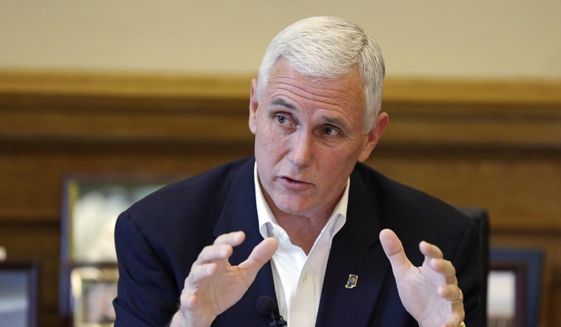The Environmental Protection Agency for years has issued costly clean air rules based, in part, on two '90s-era studies linking air pollution with death.
But, critics say, the same agency has stymied efforts to access the data behind them. The transparency concerns have Republican lawmakers on a new campaign to end the use of what they dub "secret science."
"Why would the EPA want to hide this information from the American people?" House science committee Chairman Lamar Smith, R-Texas, asked EPA Administrator Gina McCarthy at a hearing last week.
Smith is among those pushing legislation to bar the use of "secret science" for EPA regulations -- namely, Clean Air Act rules that Republicans say are based on research hidden from public view. The bill has passed the House and now awaits action on the Senate floor.
"The most expensive rules coming out of the EPA rely on secret science," Sen. Jim Inhofe, R-Okla., chairman of the Senate Committee on Environment and Public Works (EPW), said in a statement to FoxNews.com. "Americans deserve to have access to technical information and data being used to develop EPA rules that significantly impact their daily lives."
For its part, the EPA has argued that releasing the data could compromise confidential personal information, and that it didn't have access to all the research anyway, among other issues. The agency made an effort to contact the original institutions behind the studies in 2013, but Republicans say they again would not hand over everything.
During last week's hearing, McCarthy questioned why lawmakers have focused on this -- and why anyone would want to seek out this kind of granular information.
"The EPA totally supports both transparency as well as a strong peer-reviewed independent science process, but the bill I'm afraid I don't think will get us there," she said. "I don't actually need the raw data in order to develop science, that's not how it's done. ... I do not know of what value raw data is to the general public."
But Smith said the agency "has a responsibility to be open and transparent with the people it serves, and whose money it spends."
Further, Inhofe said the data pertains to everything from forthcoming emissions rules for power plants to mercury rules recently challenged by a major Supreme Court ruling.
The Republican legislation -- called the Secret Science Reform Act of 2015 -- would bar the EPA from issuing certain rules unless all relevant research is named and publicly available for those who want it. In seeking the change, critics say the EPA's air quality rules for years have relied largely on two studies from the 1990s whose data is not entirely accessible -- including a 1993 Harvard studylinking air pollution and mortality in certain U.S. cities, and another from the American Cancer Society.
In the mercury case cited by Inhofe, the high court ruled last month that the EPA should have factored in the costs of recent rules targeting mercury and other pollution. McCarthy reportedly has said the "very narrow" ruling won't affect the separate and ongoing effort to draft new power plant emissions rules, which could be completed in a matter of weeks. The White House has taken a similar stance in downplaying the implications of the 5-4 decision.
But the ruling nevertheless has emboldened critics. And the "secret science" legislation could add to that pressure.
An EPW committee aide told FoxNews.com the legislation, if approved, potentially could impact both the mercury and greenhouse gas emissions rules.
"Really, this is just simple transparency," the aide said.










